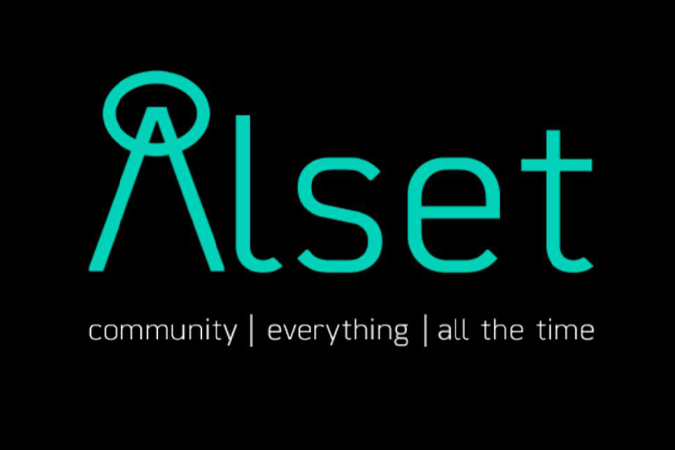How Do You Create A Startup Brand?
Launching a startup company can be daunting. While a new idea is always exciting, the lengthy decision-making involved in creating a brand identity can seem overwhelming. What is your brand about? What does it want to tell its target audience? How will you understand your customers ‘ frame of mind, so you can resonate with them? These and other questions will undoubtedly arise when you start to think about what your product or service is about, and what your client base wants.
Once you’ve started building a brand identity, there is the challenge of having a viable business plan. Concerns about raising money, or having enough to stay afloat in the early days of a new business, can be stressful. You probably want to seek legal advice about setting up a company; although the cost can be off putting, this will give you the best opportunity of success. You’ll need to consider the structure of your business’ ownership, the organisation of company finances and tax obligations. New companies also need to ensure they comply with UK data protection and GDPR laws, as well as access to sources of funding – once you become a legal personality (or business), your start-up will become eligible for sources of funding only available to businesses.
Each of these require legal advice; it will be much more difficult, and a risk, to handle on your own. As to funding a start-up, it’s always wise to discuss financial considerations from your bank and/or a financial adviser.
Although the financial and legal practicalities of starting a business are essential, before you build a business you need to build a brand. Otherwise, you have no way of reaching your target client base. In a saturated market, you want to find a niche and stand out. Here is the Seek Social creative team’s view on how to build a strong brand identity, and make your product or service stand out among the competition.
Other ServicesVIEW ALL SERVICES
How to build a brand for you start-up
What is a brand?
What is a brand in the first place? It isn’t just a name or a logo, but a collection of ideas, feelings and mental images that people associate with your company. In other words, your brand is the impression you leave on people. Businesses have names, colours, logos, fonts and writing styles which all affect how they are perceived by customers.
Yet it’s impossible to effectively create a brand without being consistent across each aspect of your business, from product or service descriptions to social media posts. A simple and effective way to create a brand begins with establishing what your consistency is going to be – how is it going to look, what feelings and ideas do you want it to evoke?
When creating your brand, there’s a process you can follow. Whether you choose your slogan or logo design first doesn’t matter so much. What is crucial is that you do your market research first – this is essentially strategic planning, so that you know how to build a brand image that will attract your client base.
First and foremost, you need to understand your market. Who are your potential customers and competitors? Research your product or service and analyse your direct (and indirect) competitors.
Learn about your target market. Read forums, blogs and reviews that relate to your target audience; find out what they’re talking about and read their reviews of competitors. Look at the social media accounts they follow, and who they engage with the most.
Talk to people who are part of your target client base; ask which brands they buy from and why.
Finally, go shopping (online or in real life, or both) to see how your customers browse and purchase products in your space.
From this research, you’re trying to gauge who makes up your target audience, and what they want. Who are the customers you could sell to most easily (the ‘low hanging fruit’)? Who are the main competitors, i.e. long established, well-known brands, in your market? Note how your client base speaks and what they talk about; look out for their interests and their language style (e.g. vocabulary, slang).
It’s essential to have a thorough understanding of your client base before making any decisions about your brand identity. Your market research will inform the choices you make about market positioning (which space in the market your brand hopes to occupy).
A brand can’t be all things to all people; it needs to have a strong sense of focus. Here are some ideas to help you work out how your brand is going to position itself.
A simple exercise you can try is writing a ‘positioning statement’, which is simply one or two sentences explaining what your business offers, to whom, and what value it provides.
For example, if you’re hoping to sell toothpaste:
We offer eco-friendly toothpaste to young environmentally conscious people, whitening their teeth and having a positive environmental impact. Unlike many other dental hygiene brands, we use only responsibly sourced and natural products, and also include medical grade whitening ingredients.
A ‘value proposition’ is what your customers want to buy from you. It should offer something they can’t find elsewhere. Define what this is and incorporate it into your brand message.
What words and phrases do you want customers to associate with your brand? One way to get at this is by imagining your brand as a person. What would they be like? What kind of person would your target audience be drawn to? This can help you to establish the tone of your content, and to create content to appeal to your customers. It can be helpful to imagine your brand as a person, and then describe them. What adjectives would you use? What concepts, metaphors or philosophy would describe them? The concepts can be anything – places, celebrities, animals, events….
These exercises can help you decide the kind of qualities you want your brand to have, and to ensure you portray these in all your content.
Of course, the name isn’t the be all and end all of a brand. It’s the brand image, reputation, and its actions which give it meaning. That said, as a start-up, choosing its name is one of the first big decisions you’ll make. It influences your logo, your marketing material, and whether you get a trademark if you eventually get to consider that.
You want a name that’s memorable and difficult to imitate, and importantly, not easy to confuse with your competitors. If you’re starting out with a small range of products/services, but hope to branch out in future, then choose a broad name, so that it’s easier to expand your range further down the road.
Businesses come up with their names in all kinds of ways. Many do some form of brainstorming, with exercises like inventing a word (maybe based on the ideas its sounds conjure up), describing what they offer (e.g. ‘Honest burger’), or altering an existing word (e.g. taking a Latin word and adding something, or creating an amalgam of two words).
When you’re launching a new business, you want it to be memorable when your target audience first encounters it. Slogans are just brief, descriptive taglines you can use in web content, in social media posts and on any other marketing material.
Effective slogans are short, to the point, and create a strong impression of your brand. If you’re stuck thinking of a slogan, then here are some ideas to brainstorm…..
- Make a bold claim, such as, ‘the best meal prep service in Manchester’.
- Incorporate the personality/values of your customer base, e.g. ‘We don’t own it, you do.’ (Maybelline).
- Use metaphors. (‘Redbull gives you wings’)
- Use a rhyme.
Be creative with language – use alliteration, or minimal pairs, e.g. Awesome coffee, no nonsense (Two Chimps Coffee), or neologisms like Sephora, who made ‘beauty’ a verb: (‘Let’s beauty together’).
Once you have a brand name and message, you need to consider the visual representation of your brand (the logo, font, colours, etc). Choosing colours isn’t just about the look of your brand, but also about the feelings you want to evoke in your target market. Although this is more of an art than a science, there is some logic that goes into it. For example, people often associate red with excitement and boldness, blue with trustworthiness and dependability, and green with health and growth.
It’s a good idea to choose fonts at the same time as deciding your colour scheme. Decide on a font that works well with your logo design and colour palette, and which is in line with your brand image.
Last, but not least, is your logo design. Communicate with a graphic designer to find a style that works for your business and will help to establish your start-up reputation. Make sure that the colours and design convey your brand image.
There are many different directions a brand logo can take. For example, it can be abstract and have little inherent meaning, such as the Google Chrome logo. These kinds of logos take on a meaning for your clients as they become familiar with your brand.
Other options for a logo include emblems (such as Starbucks), which combine an image with text, letter-marks (e.g. IBM, ABC), or an icon (a visual representation of your brand as a metaphor; Twitter is a good example of this). As a new business, using an icon logo can be difficult, as your audience isn’t familiar with who you are yet. Using an icon alongside a phrase or slogan can be a safe bet.
Once you’ve established your brand message and visual design, you need to be consistent across all your branding material. Having a brand story often helps customers to trust your company. Clients are looking for brands which share their values – whether that’s sustainability or commitment to particular social causes – and will look at how your business is run. If you have a brand story, your target audience feels reassured that the company they’re buying from is legitimate.
In writing a brand story, here are some prompts to think about:
- What motivated you to start your business?
- Does your company have a broader purpose (e.g. to have a positive environmental impact; to improve people’s health)?
- Does your business make any positive contributions to the world (e.g. donations to charity, participation in charity events)?
Not every start-up needs to be motivated by a mission, but starting the brand creation process with a set of values is certainly helpful. All businesses need to have a ‘personality’, or set of values that customers associate with them – and a brand story will help customers to connect with your brand as a start-up.
At Seek Social, we know how stressful starting a new business can be – we hope this guide has been useful. This blog is part of a series – we also have articles by our team on brand awareness and more technical topics, like web design and SEO.









